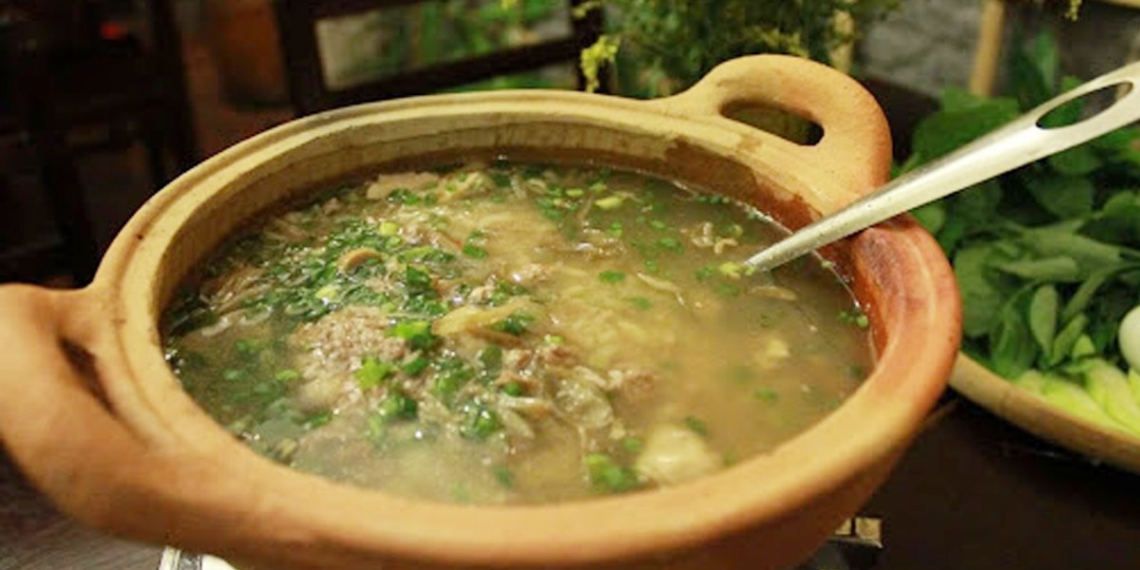Besides the familiar mud crab porridge, you now know two more recipes that combine with balut and amaranth, which are incredibly delicious and attractive. Let’s cook and prepare these three delicious porridges!
1. Mud crab porridge
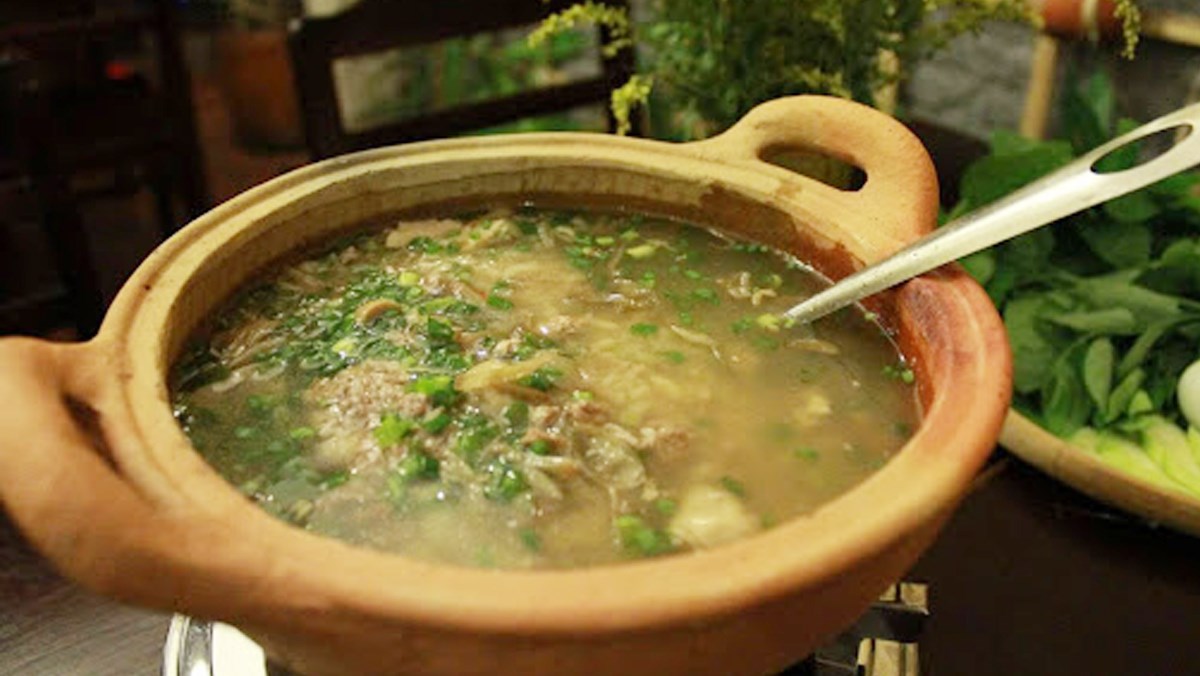
-
Preparation
30 minutes
-
Cooking
1 hour
-
Difficulty
Medium
Ingredients for Mud Crab Porridge Serves 4
Mud crabs 500 gr White rice 200 gr Shallots 2 bulbs Spring onions 30 gr Cooking oil 2 tablespoons Common seasoning a little (seasoning powder/ salt/ monosodium glutamate/ pepper)
Ingredient image
-800x450.jpg)
How to Make Mud Crab Porridge
-
Prepare the Ingredients
Wash the white rice thoroughly, soak it in water for 30 – 45 minutes to soften the rice. After soaking, drain the rice and use a pestle to crush the rice grains so that when cooked, the rice will soften quickly and expand evenly.
For the crabs, soak them in water, changing the water every 10 minutes until the water is no longer murky. Then add some salt and soak for another 10 minutes.
Take the crabs out and let them drain, then remove the shell and the abdomen of the crab, placing the crab roe into a small bowl.
Next, pound the crabs until they are finely crushed, remembering to sprinkle a little salt so that when cooked, the crab roe will solidify easily and reduce the chances of splattering.
Finally, use a piece of cheesecloth or a strainer to extract the crab juice, filtering 3 – 4 times to ensure no crab bits remain. If you have a blender, you can add the crabs with a little water and salt, blend, then strain to get the crab juice, discarding the crab solids.
Shallots: peel and chop finely.
Green onions: trim the roots, wash thoroughly, and chop small.
Note: If using a blender to process the crabs, be sure to wash it thoroughly afterward to avoid lingering odors.
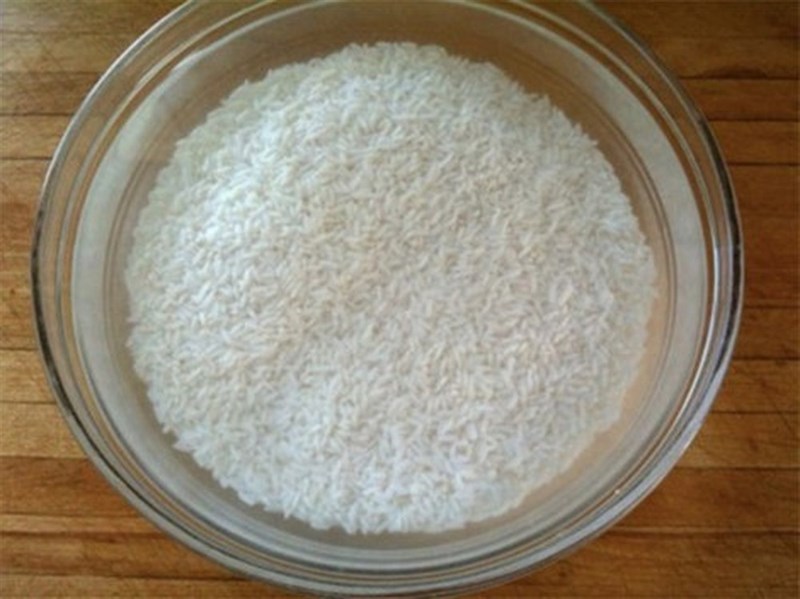
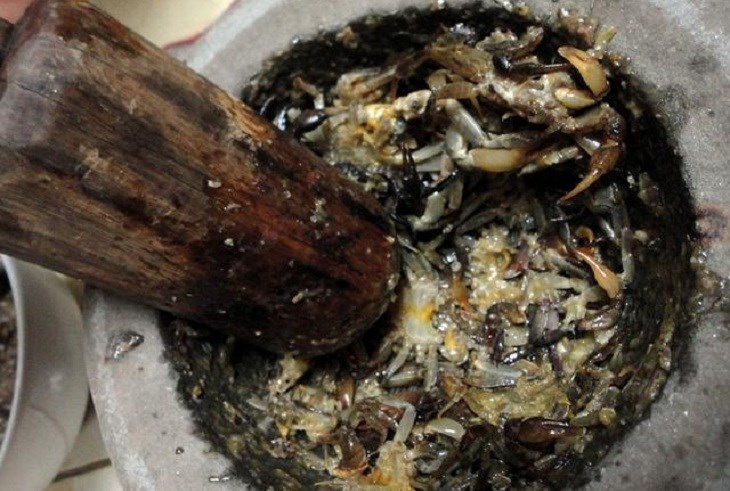
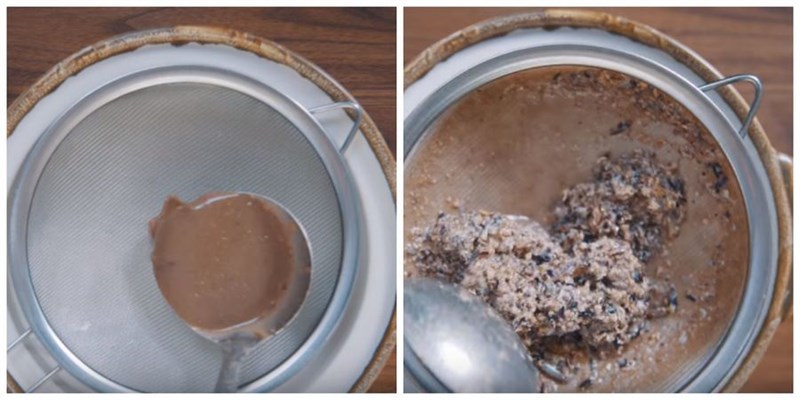
-
Making crab roe
Pour the filtered crab water into a pot, place it on the stove over medium heat, and stir well until you see the crab meat starting to coagulate, then you can stop. Wait for the water to boil vigorously; when the crab meat forms a film, reduce the heat to low, and scoop it out into a large bowl.
Next, you place a pan on the stove with 2 tablespoons of cooking oil and 1 tablespoon of shallots.
Sauté the shallots until golden, then add the crab roe, using chopsticks to stir well until fragrant. Next, add the crab meat that you scooped out, remember to reduce the heat, season to taste, and let it cook on the stove for about 10 minutes for the meat and crab roe to absorb the flavors, then turn off the heat.
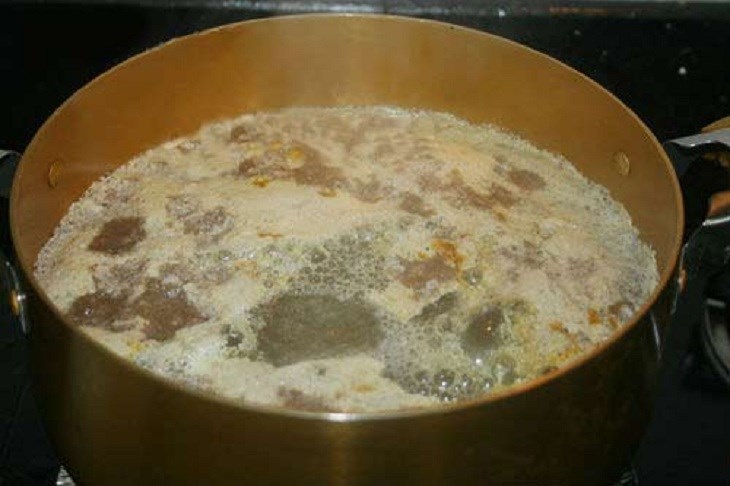
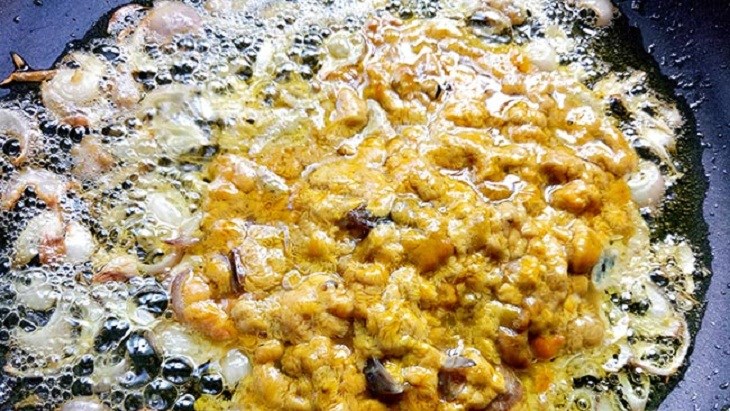
-
Cooking porridge
You continue to boil the crab water, add the prepared rice, and stir well to prevent the porridge from clumping at the bottom of the pot.
Keep the heat medium and stir until the rice is evenly expanded and cooked through, then reduce the heat, checking if there is enough water. If the porridge is too thick, you can add a bit of water and season to taste.
Note: don’t season too salty because soon you will add the crab and crab roe into the porridge. Continue to cook for an additional 20 – 30 minutes for the crab meat and crab roe to infuse into the porridge, making it more aromatic and flavorful.
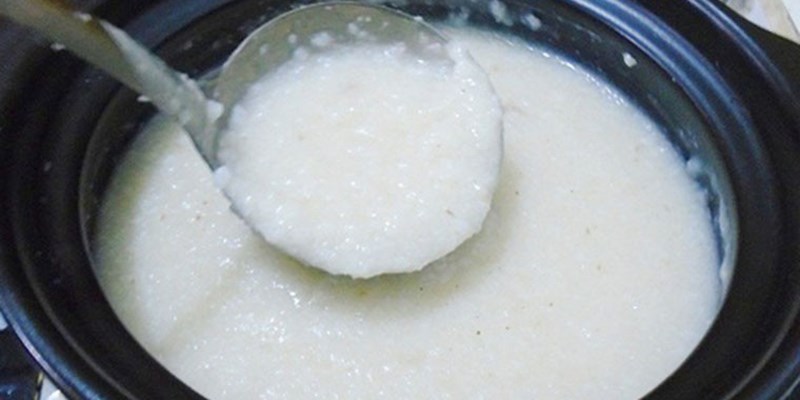
-
Final product
Serve the porridge in a bowl, add chopped green onions on top, spoon the sautéed crab roe over it, sprinkle a little pepper to enhance the aroma, and enjoy. The porridge can also be served with fried dough sticks for a delicious combination.

2. Soft-shell crab porridge with fertilized duck eggs

-
Preparation
30 minutes
-
Cooking
30 minutes
-
Difficulty level
Easy
Ingredients for Soft-shell crab porridge with fertilized duck eggs Serves 4
Soft-shell crab 500 gr Roasted rice 1 cup Fertilized duck eggs 7 eggs Bitter herbs 200 gr Red onion 5 gr Green onion 5 gr Fish sauce 1 tablespoon Common spices a little (sugar/salt/pepper/seasoning) Cooking oil a little
How to choose good fertilized duck eggs
- Choose fertilized duck eggs that feel a bit heavy; these are younger eggs. If the egg feels light, it is an older egg.
- You can hold the egg up to a strong light; fresh eggs will have a small, clear air pocket at the top without any black spots.
- If possible, drop the fertilized duck eggs into a bowl of diluted salt water; if the egg sinks, it is good, while eggs that float are older and should not be bought.
- Hold the egg and shake it gently; if you don’t hear any liquid moving, it is a good egg to choose.
-800x450-1.jpg)
Tools needed
How to Make Crab Porridge with Duck Eggs
-
Prepare the Ingredients
Fresh crabs should be cleaned, separated from the shell, and the apron should be discarded, while the crab roe is kept in a bowl separately. Duck eggs should be washed to remove any dirt on the surface.
Green onions are trimmed, cleaned, and chopped finely. Shallots are peeled and minced. Bitter herbs should be soaked in diluted salt water for 10 – 15 minutes to remove all impurities, then rinsed 2 – 3 times with clean water and drained.
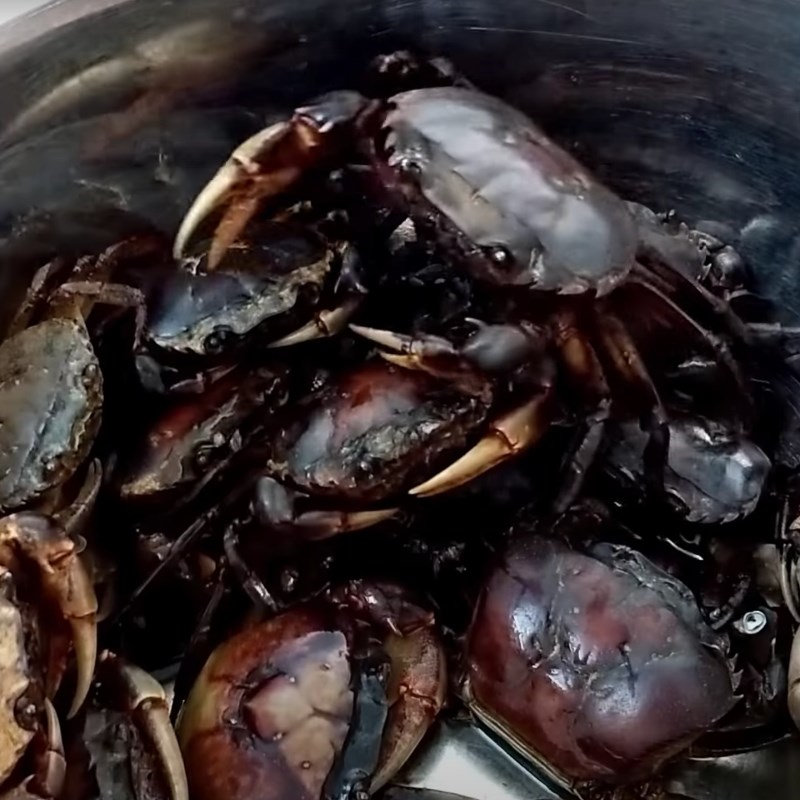
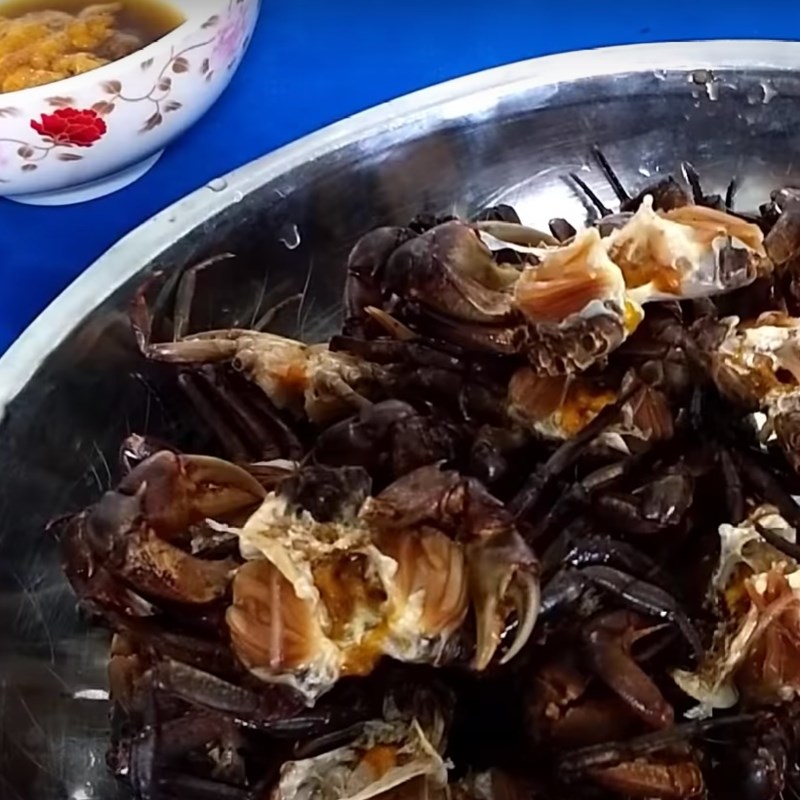
-
Grind and Strain the Crab
Put all the crabs into a mortar and pound them finely or place them in a blender with a little water. Strain through a sieve until clean, keeping only the liquid and discarding the crab residue.
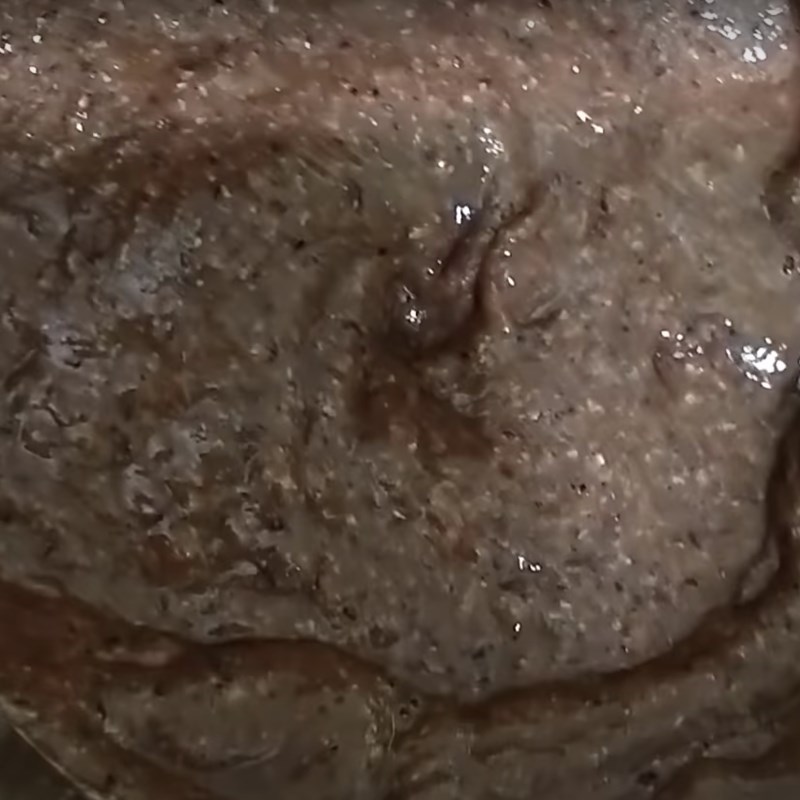

-
Stir-fried crab roe
First, cook the crab in boiling water on high heat, stirring constantly to prevent the crab from sticking to the bottom of the pot and season with a little salt. When the crab floats to the surface, remove it to drain and keep the crab cooking water.
Next, add a little cooking oil to the pan, and when the oil is hot, add minced shallots and sauté until fragrant. When the shallots turn golden, add the crab roe to stir-fry first, then add the boiled crab and season with 1 teaspoon of seasoning powder and 1 teaspoon of salt, cooking for 2 – 3 minutes over medium heat.
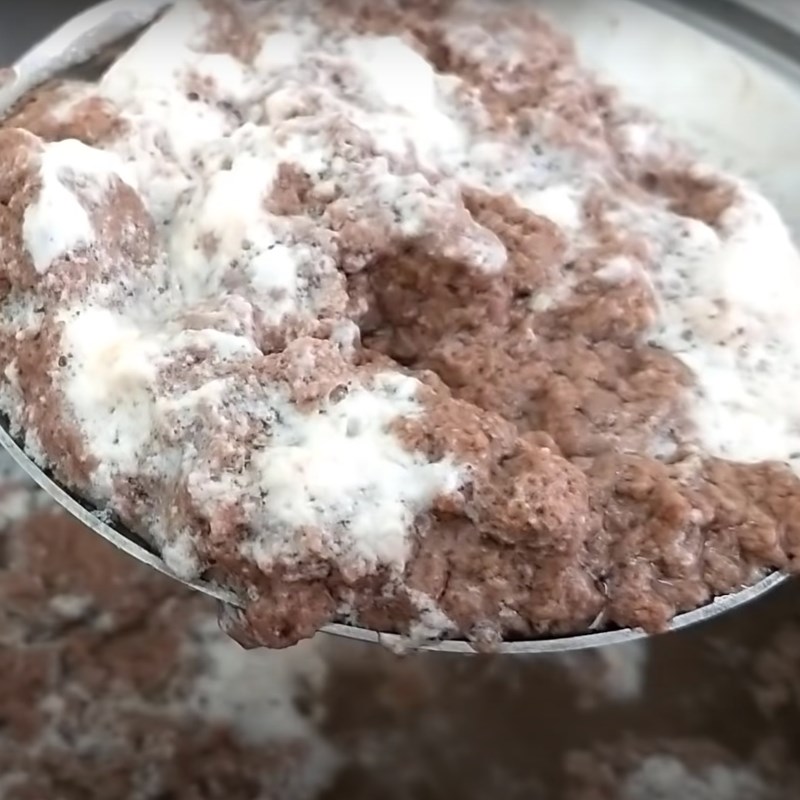
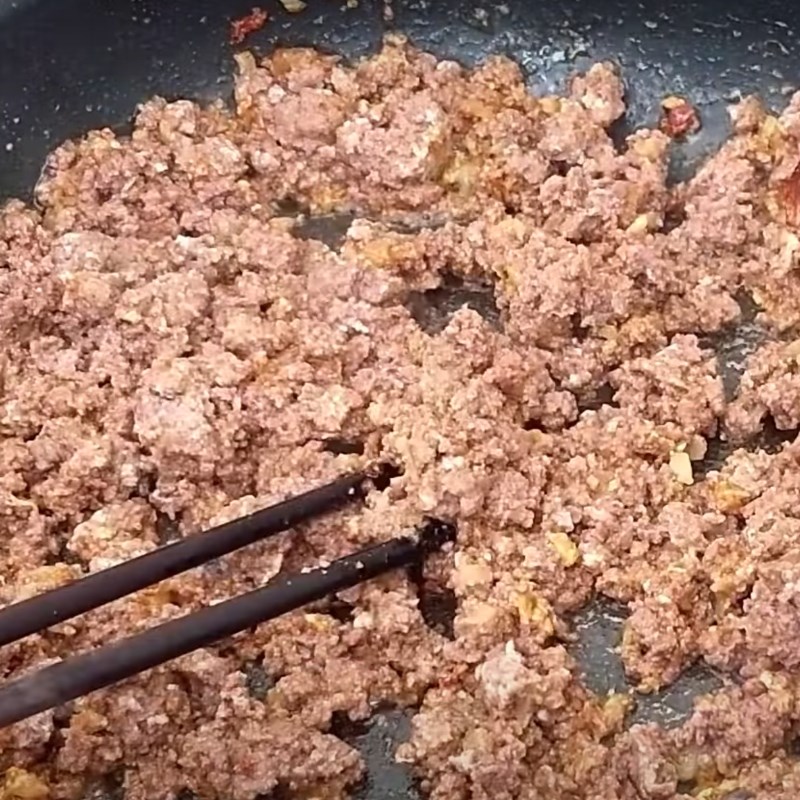
-
Boil fertilized duck eggs
Boil the fertilized duck eggs in enough water to cover the eggs for about 5 – 10 minutes until they are partially cooked. After that, wait for the eggs to cool, then peel and place them in a separate bowl.
Tip:- To prevent the eggs from cracking while boiling, you can add a little salt.
- Avoid boiling the eggs on high heat or with too much water, as this can cause the eggs to crack during cooking.
- You can also buy pre-cooked fertilized duck eggs from outside to save time!
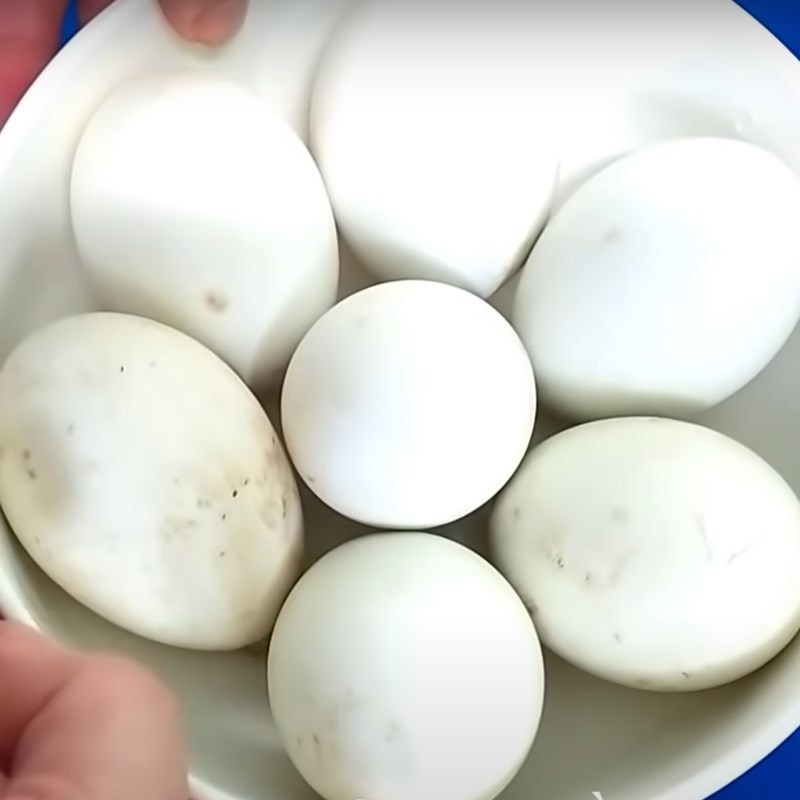
-
Cooking porridge
You add roasted rice to the crab water and cook over high heat until the porridge is soft. During the cooking process, remember to stir regularly so that the porridge does not burn at the bottom of the pot!
When the porridge is soft, add the crab and season with 2 teaspoons of salt, 1 teaspoon of seasoning powder, and 1 teaspoon of sugar, then stir well to allow the spices to soak into the ingredients.
The porridge is ready to eat; you add the boiled duck eggs and cook for another 5 minutes to ensure the eggs are fully cooked.
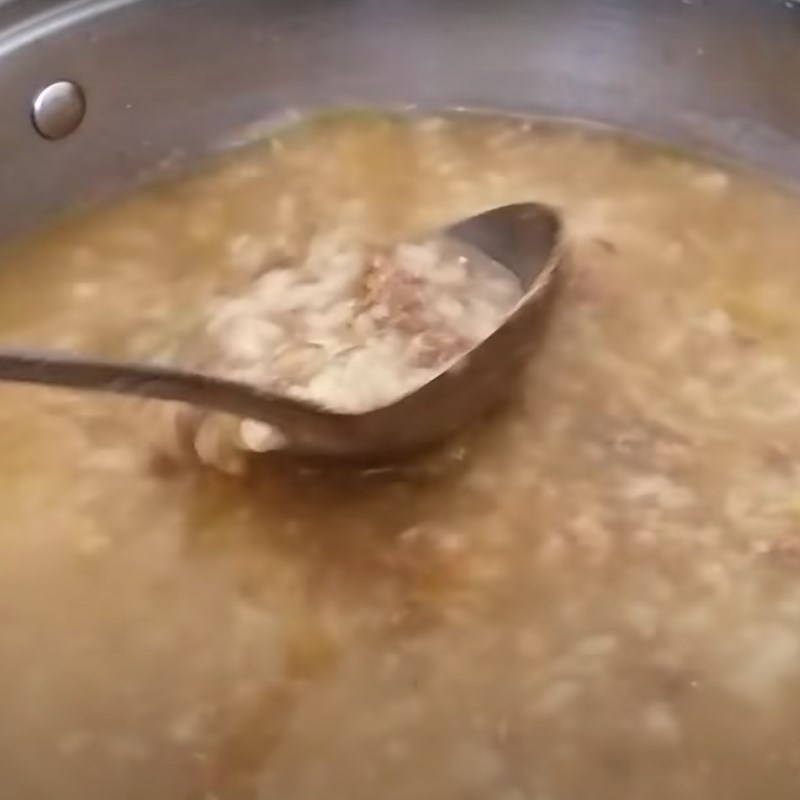
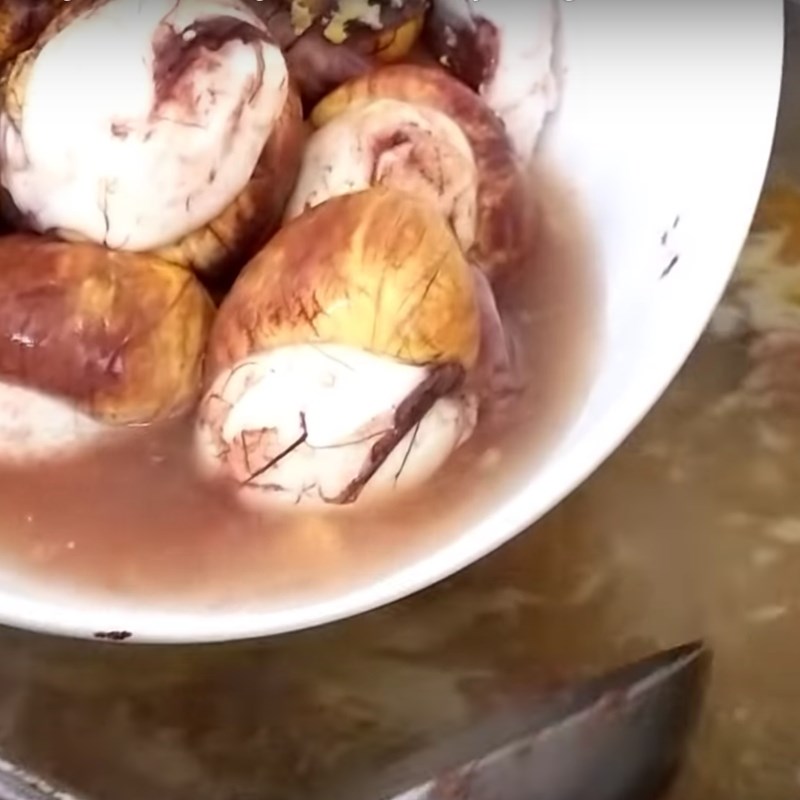
-
Final product
You serve the porridge in a bowl, sprinkle with chopped green onions and pepper on top, and it’s ready to enjoy.
Crab porridge with duck eggs sounds quite unusual, but the delicious taste is irresistible thanks to the sweet crab and the creamy duck eggs. To enhance the flavor of the porridge, you can serve it with bitter herbs and chili fish sauce, which will be fantastic.

3. Crab porridge with amaranth
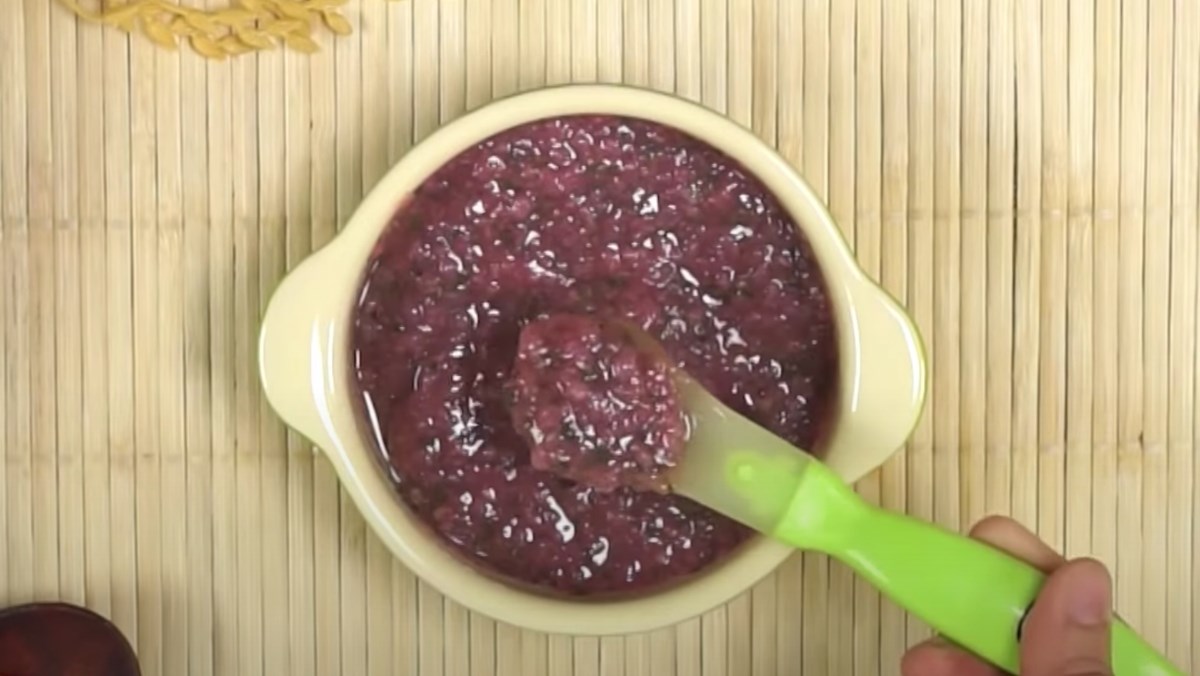
-
Preparation
30 minutes
-
Cooking
30 minutes
-
Difficulty
Easy
Ingredients for Crab porridge with amaranth Serves 2
Freshwater crab 50 gr Amaranth 30 gr Rice 30 gr Cooking oil 3 ml Salt a little
How to choose fresh and delicious amaranth
- There are 2 types of amaranth sold in the market: white amaranth and red amaranth. Each type of amaranth has a similar delicious taste and nutritional value; however, to make the crab porridge look beautiful, you should choose red amaranth.
- You should select amaranth leaves that are not bruised, rotten, with firm and stiff stems, not soft, to avoid buying wilted or old amaranth that makes the dish less tasty.
-800x450.jpg)
Utensils required
How to prepare crab porridge with amaranth
-
Prepare and grind the crab
Soak the crabs in water for about 1 hour to remove all the sand, then rinse with clean water. Remove the crab’s apron and shell and set them aside; use a small spoon to scrape the crab roe into a separate bowl.
Then, put all the crabs in a blender with 100ml of water and strain through a strainer, filtering the crab 2 to 3 times to ensure no crab residue remains.

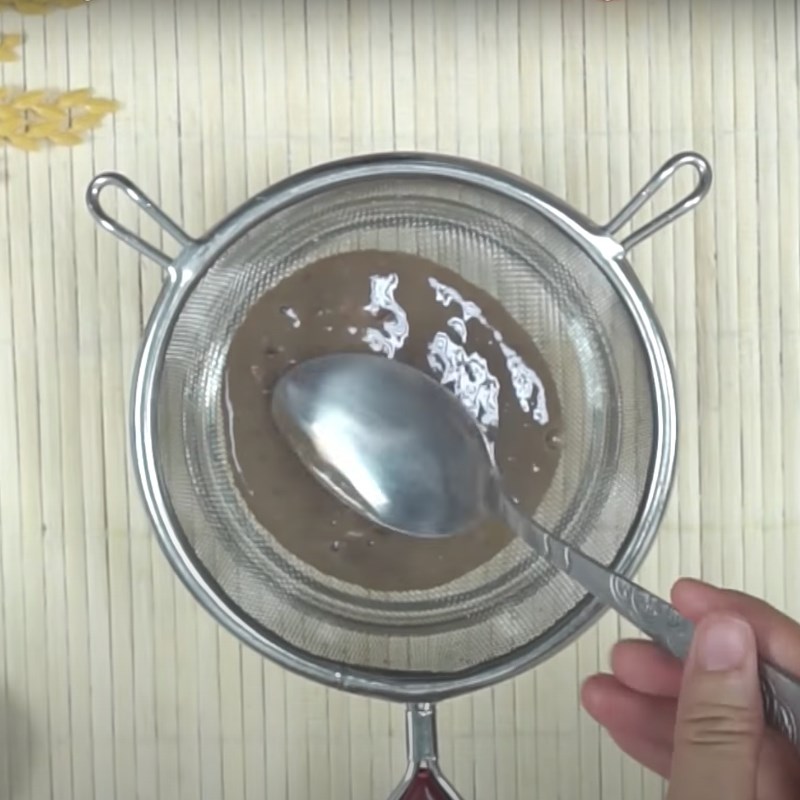
-
Preparation of Amaranth
You remove the damaged leaves of the amaranth, then soak it in diluted salt water for 5 – 10 minutes and rinse it with clean water. After that, chop the amaranth finely or put it in a blender to puree.
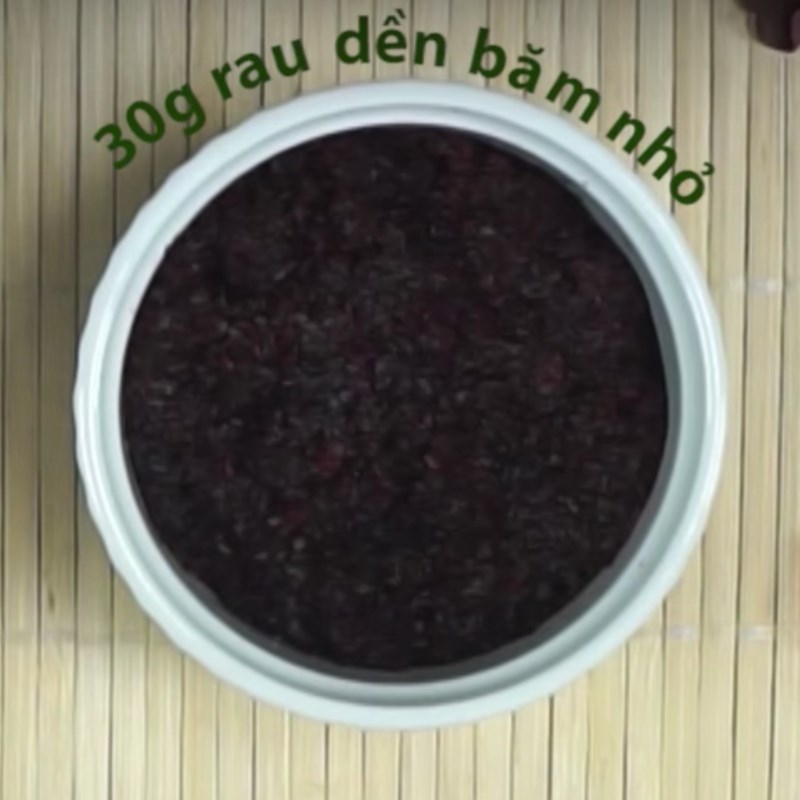
-
Cooking the Porridge
You add 30g of rice into a pot with 500ml of water and place it on the stove, simmering the porridge for 15 – 20 minutes over medium heat until the porridge is soft. When the porridge is soft, add the crab and cook for an additional 2 – 3 minutes.
Finally, add the amaranth and cook until it boils, then turn off the heat.
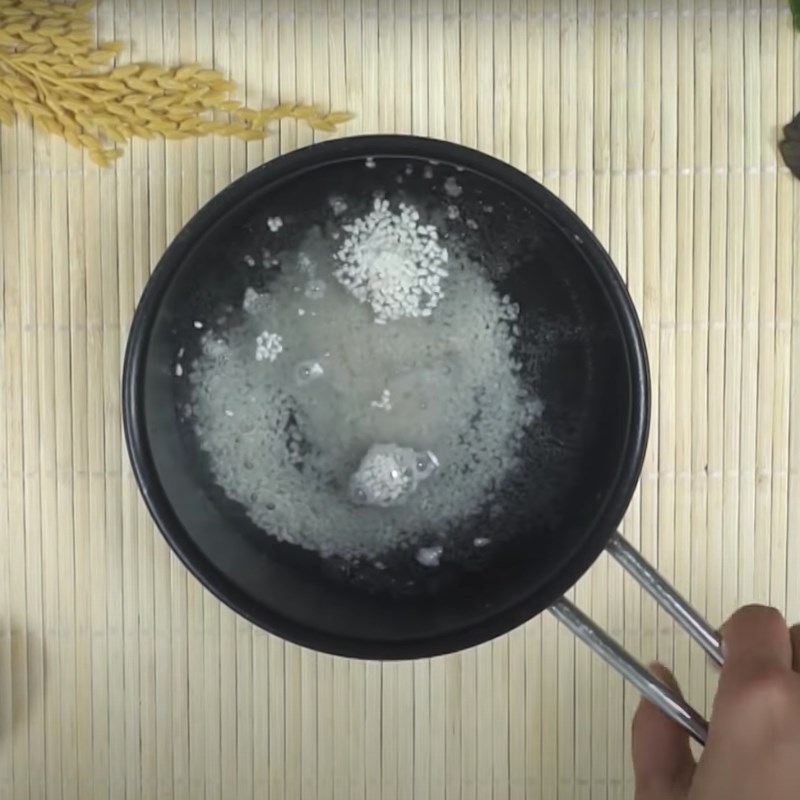


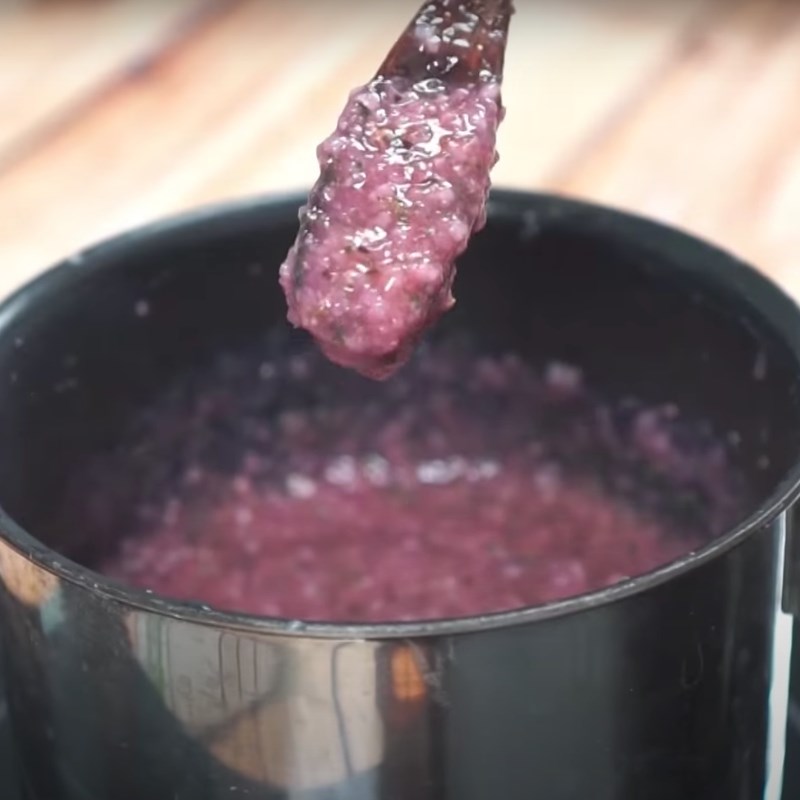
-
The Finished Product
You serve the porridge in a bowl, add some cooking oil on top and stir well, immediately enjoying the fragrant taste of the porridge thanks to the crab, and the light sweetness from the amaranth, which will surely make your kids love it!
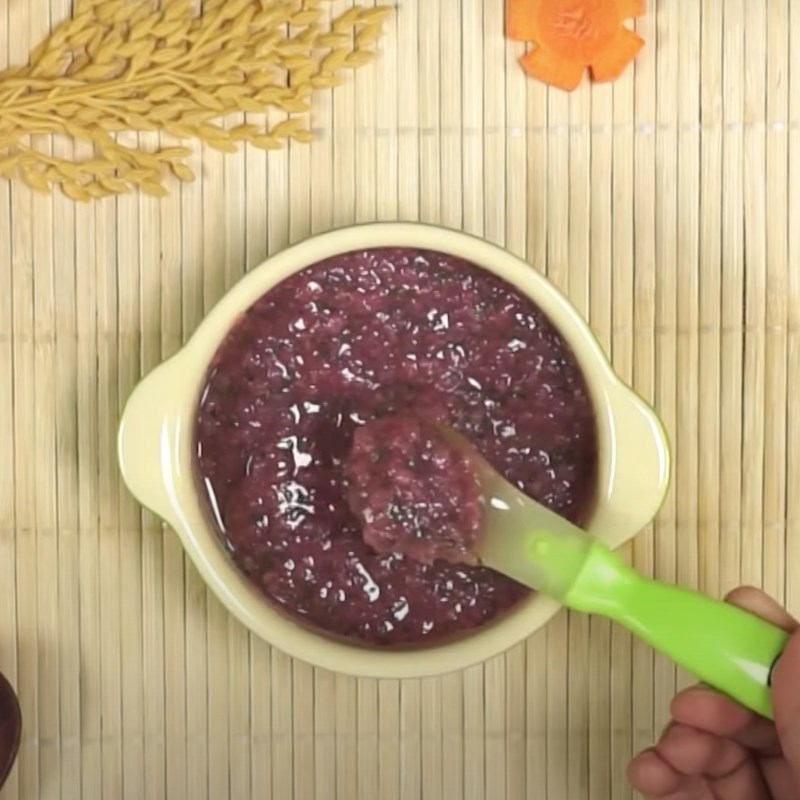
How to choose fresh delicious freshwater crabs
- It is advisable to select crabs that are still alive, have all their legs, and the claws point upwards when you catch them, with a bright, shiny shell.
- You should turn the crab upside down and press on the abdomen; if it does not sink, then the crab is firm. If it sinks, it indicates the crab is soft, has little meat, and is usually not tasty.
- To distinguish between male and female crabs, look at the crab’s abdomen. If the abdomen is small, it is a male crab, which will have more meat. If the abdomen is large, it is a female crab, which will have more roe. You should choose between male and female crabs based on the needs of your dish.
- You should avoid selecting freshwater crabs with red eyes, a hairy underside, or a back shell that has star-like spots.
See more:
Three dishes of freshwater crab porridge with quail eggs and amaranth are ready; enjoy them while they are hot to maintain their deliciousness. Good luck!
*Image and recipe references from YouTube channels HỒNG THANH FOOD and Mabu Dinh dưỡng
